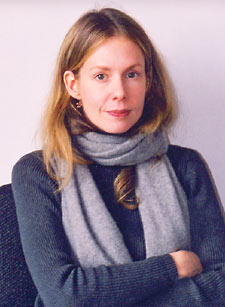|
Jo Ann Wasserman, in her first full-length book, The Escape (120 pages), explores autobiographical subject matter that was not present in her two slim but impressive chapbooks (what counts as proof and we build mountains). The dual themes here are preoccupations that seem to have been with the author her entire adult life: anxieties about writing (or, rather, not writing), and the memory of and complicated feelings about her mother, Nancy, who died in 1986 at the age of 53 in a horrific car crash (which we gradually learn about), when the author was 18.

In the opening section, Memoria, the “writing” element of Wasserman’s subject matter is in the forefront, with passages from diaries from the ’90s and references to notes that may have been made much earlier than that, which are not so much elucidated as encapsulated within a larger narrative. The results are affecting, funny, and strange. There is something cinematically surreal about a number of Wasserman’s diaristic scenarios. There is also a deceptive straightforwardness in the diction — what is seemingly frankly revealed still retains a sense of mystery. She also employs a masterly use of repetition — words, phrases, and scenes reappear surprisingly and effectively, and gradually illuminate scenes of childhood . Apropos, this book should definitely not be browsed through, as we often do with poetry, but read like a novel, from beginning to end.
The prose of Memoria acts as a prologue and gives way to the First Enkomion Sequence, a series of eight rather “veiled” poems of from six to 107 lines, some or all of which may be descriptions and imaginative elaborations of childhood photographs. The complexity of the interaction between “objective” memory and retrospective feelings about “you” (the author’s mother) take over these somewhat oblique encomia (poems of praise) and most of the rest of the book.
Next, we come to 11 extraordinary sestinas. Sestinas in sequence can be pretty heavy going but Wasserman’s are so tense and exhilarating that I was constantly forgetting what form they were in until I was reminded by the concluding (and often stunning) three-line coda. The impact is all the more astonishing because many revolve around such intrinsically “exciting” events as a mother going to the city on the train to have a root canal and taking her young daughter along. Further, when one gets around to thinking about the end words, they are such as would make a poetry class groan if given as an assignment — Jesus saving anchor saving spring scream — being one example.
Part Two begins with Write a Poem, a prose description of the author’s stay in a cold-water rented cottage on Nova Scotia (in 1999), where her mother’s family was either from or spent time — followed by seven more of her tour-de-force sestinas, one of which, Funeral/September (her mother’s), parallels the final one in the first group, Funeral/July (her maternal grandfather’s). Part Three consists of a Second Enkomion Sequence (ten poems), and The Escape, the most straightforward piece in the book, which relates the family tensions shortly before the author’s “escape” to college, soon to be followed by her mother’s fatal drive. But there was to be one last, unsatisfying, time together for mother and daughter when the parents visit the school. They say an awkward goodbye as the father waits in the car, impatient to be going.
I should emphasize that, as “emotional” as some of this synopsis may sound, there is no sentimentalizing here. The pathos come from the author’s poignantly clear-sighted observation of herself and of the past. Wasserman has incorporated her notebook anxieties into an ambitious and assured piece of writing that is at the same time a touching and personal tribute to her mother. The Escape is a literary work of a very high order.
Photo of Jo Ann Wasserman, New York City, 2002, by John Tranter
|
